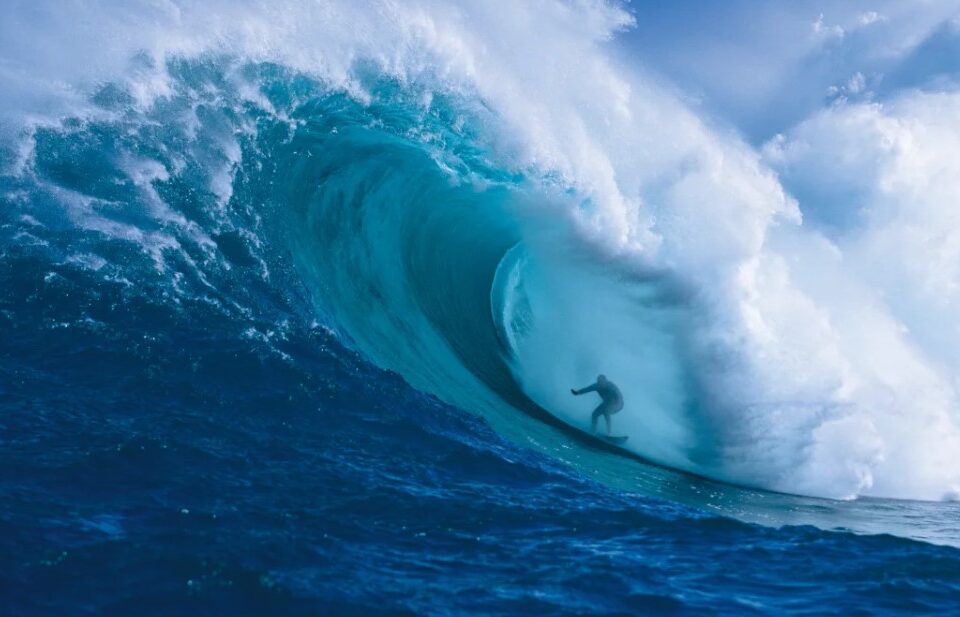Good surfing also means learning to be a good surfer, one respectful of others and aware of the rules. Here are 10 rules to surf by.
1. Don’t paddle out directly behind another surfer.
If a large wave breaks unexpectedly and you are lined up behind another surfer, he can get spilled over on top of you. You can get clonked in the head by his board, which would cause him to be sorry and you to retire to the beach with a throbbing skull. Instead, paddlSe beside the other surfer, keeping about 30 feet between you.
2. Don’t let go of your board when a big wave bears down on you.
A sure sign of a beginner is the timidity displayed when a surfer jumps off his board in the face of a big crashing wave. If you are not in a position to ride it, do a turtle roll by turning upside-down and propelling the through the wave, holding on to the rails of the board at all times. Letting go of the board can be dangerous to yourself and others, even if you are wearing a leash.

Paddling over the shoulder can put you in the path of another surfer. The ensuing collision could be ugly.
3. Don’t paddle over the shoulder of a wave when another surfer is about to ride.
The shoulder of the wave is the part near the peak that has not yet spilled over. Since surfers often catch a wave near the peak, paddling over the shoulder could put you directly in the path of another surfer who is just popping up. The resulting collision could be ugly. Instead, take a wide berth around breaking waves when paddling out.
4. Don’t paddle through the lineup.
The lineup is the area where surfers sit on their boards, waiting for the waves to break. There is a loose etiquette to the lineup, basically first come first served, although sometimes the lead surfer might let another surfer go ahead of him. For this reason, avoid paddling through the lineup as you may be cutting off a surfer who is paddling to catch a wave.
5. Don’t jockey for position in the lineup.
Unless the surfers ahead of you in the lineup give you a clear signal that they are not going to take a wave, sit tight and wait your turn. It may look like the other surfers are passing up opportunities at premium waves, but give them the benefit of the doubt and don’t try to move up on them. If they think you are horning in you could make enemies, resulting in an unpleasant day of surfing for everyone.
6. Don’t “drop in” on another surfer.
One rule you should try never to break when surfing is “dropping in” on another surfer, which simply means you are cutting in front of him, trying to catch the wave he is paddling for. Not only is dropping in rude, it’s also dangerous. The act of paddling around another surfer to beat him to a breaking wave is called “snaking” and is particularly frowned upon. Don’t do it.

Do commit to your wave. Don’t just bail and slide back over the shoulder. Other surfers are waiting.
7. Do commit to your wave.
Once you’ve committed to a wave, stay committed. Don’t give up on it and slide back over the shoulder to wait for another turn. Remember, there are other surfers waiting to go. A surfer who can’t commit to a wave is either too selfish or too inexperienced to judge a wave properly. You don’t want to be labeled as either.
8. Do get out of the way when you are called off by another surfer.
Sometimes it happens that, without any ill intent, two surfers start paddling for the same wave. Usually the more experienced of the two will make some kind of signal to call the other surfer off. If you hear someone trying to call you off, back down and get out of the way. Failure to do so is both dangerous and rude.
9. Do defer to more skilled surfers when there is a conflict.
One of the unwritten rules of surfing is that the more experienced surfers always have the right of way. Refusing to defer to more skilled surfers when there is a conflict can lead to a dangerous game of one-upmanship that you can only lose. If you honor this tradition you will earn the respect of other surfers and be welcome among them, allowing you a better chance to become an experienced surfer yourself.
10. Do apologize if you ruin someone’s wave.
Even the most well intentioned surfer may occasionally make a mistake and ruin another surfer’s wave. If this happens, be sure to apologize. A simple acknowledgment that you were in the wrong can go a long way toward smoothing ruffled feathers and defusing conflict. Surfers who respect others can usually expect to be treated the same, leading to more pleasurable surfing for all.
Image credits:
Don’t let go, Bengt Nyman; Paddling over the shoulder, Stan Shebs; Respect the lineup, Public Domain; Commit to your wave, Jonathan Billinger











